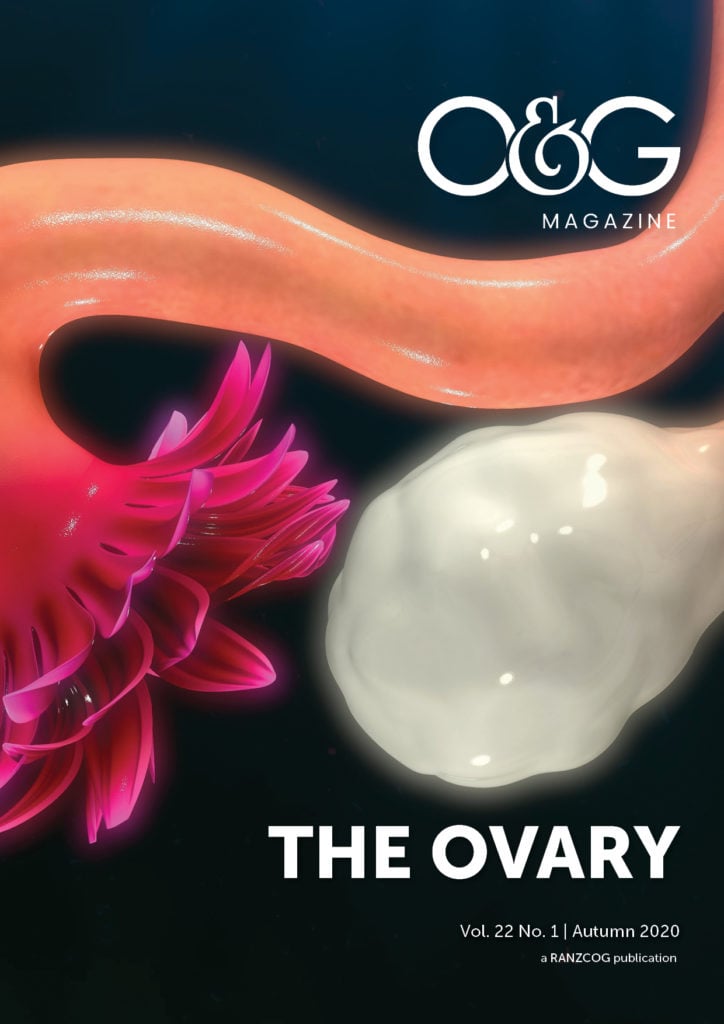The goal of ovarian stimulation in an IVF cycle is to obtain a certain number of oocytes that will enable the best probability of achieving a live birth, while minimising the risk of side effects to the woman, such as ovarian hyperstimulation syndrome (OHSS).1 2
This involves ovarian stimulation with gonadotrophins (recombinant or urinary forms) to recruit multiple dominant follicles. To prevent spontaneous ovulation cotreatment with some form of pituitary suppression is required such as a GnRH agonist or antagonist. When there are two or more leading follicles with a diameter 17–19 mm, an ovulation trigger is administered (hCG or GnRH agonist) and cumulus-oocyte complexes are collected transvaginally 36 hours later at the ‘oocyte pick up’ procedure. A fresh blastocyst (day 5 embryo) is transferred and any surplus embryos are then frozen for subsequent attempts.
Medications used for ovarian stimulation
Follicle stimulating hormone
The first recombinant human follicle stimulating hormone (r-hFSH) molecules received marketing approval in 1995 (follitropin alfa; trade name Gonal F) and 1996 (follitropin beta; trade name Puregon). These had better purity and less batch-to-batch inconsistency compared with urinary or pituitary derived FSH used prior.3 4
The recombinant forms of follitropin are produced using DNA technology. The main disparities between alpha and beta are in their chemical structure and the vectors of gene expression used. Despite the disparities between follitropin alfa and follitropin beta, results of head-to-head clinical studies and retrospective studies comparing the two products for ovarian stimulation in women undergoing IVF have shown no significant differences between the preparations in terms of efficacy or safety.
There are currently three forms of r-hFSH available: follitropin alpha, follitropin beta and follitropin delta (trade name Rekovelle). FSH has a relatively short biological half-life of about one day, necessitating daily administration. A biosimilar version of follitropin alpha, trade name Bemfola, is also available on the Australian Pharmaceutical Benefits Scheme (PBS).
There is a long acting r-hFSH preparation that is approved on the PBS, corifollitropin alpha or trade name Elonva. Due to its longer half-life, it can replace the first seven days of daily FSH therapy. In women receiving the 150 μg dose of Elonva, compared with daily administration r-hFSH, no significant differences in live birth rate were seen.5 6 However, there was a higher cycle cancellation number due to overstimulation or under response in women with high ovarian reserve or poor responders respectively.
Human menopausal gonadotrophin
Human menopausal gonadotropin (hMG), which contains two components corresponding to FSH and LH, was first successfully extracted from the urine of postmenopausal women in 1950. Improved purification techniques with the use of FSH monoclonal antibody enabled the production of purified urinary FSH. In Australia, menotropins are available under the trade name Menopur, corresponding to FSH activity 75 IU and LH activity 75 IU.7
Luteinising hormone
Recombinant human LH (Lutotropin alpha, trade name Luveris) is available on the PBS. r-hLH is approved for use in women with severe LH and FSH deficiency, in combination with r-hFSH for instance in hypothalamic amenorrhoea. LH supports follicular recruitment and development in conjunction with FSH.8 To improve convenience, a 2:1 fixed-ratio combination of r-hFSH and r-hLH has also been developed (trade name Pergoveris) which has been approved on the Australian PBS.
There is low-quality randomised controlled trial evidence in favour of adding LH in assisted reproductive technology (ART) therapy in patients of advanced age group to improve folliculogenesis.9 10
GnRH analogues
Pituitary down-regulation can be induced either with Gonadotropin release hormone antagonists (GnRHant) or agonists (GnRHa). GnRHant are short and immediate acting and have an antagonist effect on the pituitary GnRH receptor. This prevents premature ovulation by inhibiting the release of the FSH and LH surge that can occur as a result of positive feedback from rising serum E2 levels during the mid-follicular phase of an ovarian stimulation cycle. They can be started mid- to late-follicular phase and thereby reduce the total duration of stimulation required. There are two types, cetrorelix (brand Cetrotide) and ganirelix (brand Orgalutran) available on the PBS. They are administered in a subcutaneous injection.
GnRHa achieve pituitary down-regulation by continuous administration, which induces an initial flare effect due to gonadotrophin release followed by down-regulation due to the clustering and internalisation of the GnRH pituitary receptors. GnRHa long protocol requires a prolonged period of downregulation (usually two weeks) followed by FSH stimulation to induce multiple follicular growth. GnRH agonists can be administered as an intranasal spray (nafarelin, trade name Synarel) or subcutaneous injection (leuprorelin, trade name Lucrin or triptorelin, trade name Decapeptyl) or implant (zoladex).
Ovulatory trigger
Recombinant human chorionic gonadotropin (hCG) is used as a surrogate for the LH surge. It induces luteinisation of the granulosa cells, final oocyte maturation and resumption of meiosis prior to oocyte pick-up.
In the last few years, use of a GnRHa trigger in antagonist cycles has been increasingly used as a means to avoid OHSS. However, when GnRHa is used as a trigger, it causes a ‘dysfunctional’ luteal phase due to rapid luteolysis. This either warrants the need for cycle segmentation with a freeze-all-embryos approach or luteal phase rescue with hCG or high dose luteal support (intramuscular progesterone injections). This may be viewed as one of the downsides of using a GnRHa trigger.
Luteal phase support
The luteal phase in a standard cycle of IVF is ‘dysfunctional’. The reasons for this are unclear, it is postulated to be related to destruction of granulosa cells during the oocyte pickup, administration of rhCG or supraphysiological E2 and P4 levels causing suppression of natural LH. It is therefore routine to supplement the luteal phase of an IVF cycle with progesterone. This is available in multiple preparations.
Vaginal progesterone pessaries are the mainstay because of their ease of use and equivalence to the intramuscular form. It is available in a tablet, suppository or 8% gel (Crinone).
Recently, a water-soluble injectable progesterone complex (Prolutex) has been developed for subcutaneous administration. A pharmacokinetic study of this compound demonstrated sufficient serum progesterone levels to allow clinical use in ART.11
There is no consensus on when to commence luteal phase support, it is administered anywhere between the day of oocyte retrieval to two days after.
Current protocols in ovarian stimulation
GnRH antagonist protocols
Currently in Australia, this is the most widely used stimulation cycle due to patient convenience as there is a shorter duration of stimulation. rFSH is commenced on cycle day 2. GnRHant is commenced on cycle day 6 when the leading follicle on ultrasound is 14 mm diameter. The trigger injection is given when two or more leading follicles measure 17–19 mm and oocyte pick up is performed 36 hours after trigger. This cycle allows use of both rhCG and GnRHa trigger and has a significantIly lower incidence of OHSS compared with the long agonist protocols.12
GnRH agonist protocols or ‘long’ protocol
Also called the long protocol, the pituitary is suppressed by commencement of a GnRha in the luteal phase of the preceding menstrual cycle. The agonist is continued until hCG trigger administration. The prolonged duration of treatment can be burdensome, but this cycle allows scheduling of IVF cycles with no adverse effects on pregnancy outcome.
GnRH agonist ‘flare cycle’ or ‘short’ protocol
In the short protocol, GnRHa is commenced on day 1 or 2 of the menstrual cycle. The aim is to use the initial flare effect of the GnRHa to increase recruitment of follicles, with commencement of rFSH day 3 of the cycle. A hCG trigger must be used prior to oocyte pick up. In practise, this cycle has been reserved for poor ovarian responders and is not suitable for those with high ovarian reserve due to the risk of OHSS.
Risk minimisation
The most important and potentially life-threatening complication of IVF remains OHSS. It comes with significant morbidity, including hospital admission and the need for invasive procedures such as paracentesis.13 The use of a GnRHa trigger reduces the incidence of OHSS by more than 80% compared with a hCG trigger. The use of a GnRHant cycle compared to a GnRHa cycle also reduces the incidence of OHSS by 40%.14 15
References
- Cheong YC, Ginsburg ES, Macklon NS. In Vitro Fertilisation: A Comprehensive Guide (eBook). New York: Springer; 2012. p272.
- Broekmans FJ. Individualization of FSH Doses in Assisted Reproduction: Facts and Fiction. Frontiers in Endocrinol. 2019;10:181.
- Cheong YC, Ginsburg ES, Macklon NS. In Vitro Fertilisation: A Comprehensive Guide (eBook). New York: Springer; 2012. p272.
- Lunenfeld B, Bilger W, Longobardi S, et al. The Development of Gonadotropins for Clinical Use in the Treatment of Infertility. Frontiers in Endocrinol. 2019;10:429.
- Pouwer AW, Farquhar C, Kremer JA. Long-acting FSH versus daily FSH for women undergoing assisted reproduction. Cochrane Database Syst Rev. 2015;(7):CD009577.
- Fensore S, Di Marzio M, Tiboni GM. Corifollitropin alfa compared to daily FSH in controlled ovarian stimulation for in vitro fertilization: a meta-analysis. J Ovarian Res. 2015;8:33.
- Lehert P, Schertz JC, Ezcurra D. Recombinant human follicle-stimulating hormone produces more oocytes with a lower total dose per cycle in assisted reproductive technologies compared with highly purified human menopausal gonadotrophin: a meta-analysis. Reprod Biol Endocrinol. 2010;8:112.
- Hill MJ, Levy G, Levens ED. Does exogenous LH in ovarian stimulation improve assisted reproduction success. An appraisal of the literature. Reprod Biomed Online. 2012;24:261-71.
- Hill MJ, Levy G, Levens ED. Does exogenous LH in ovarian stimulation improve assisted reproduction success. An appraisal of the literature. Reprod Biomed Online. 2012;24:261-71.
- Wong PC, Qiao J, Ho C, et al. Current opinion on use of luteinizing hormone supplementation in assisted reproduction therapy: An Asian perspective. Reprod Biomed Online. 2011;23:81-90.
- Mesen TB, Young SL. Progesterone and the Luteal Phase: A Requisite to Reproduction. Obstet Gynecol Clin North Am. 2015;42(1):135-51.
- Kwik M, Karia S, Boothroyd C. RANZCOG CREI Consensus Statement on treatment of Ovarian Hyperstimulation Sydrome. ANZJOG. 2015;55(5):413-9.
- Kwik M, Karia S, Boothroyd C. RANZCOG CREI Consensus Statement on treatment of Ovarian Hyperstimulation Sydrome. ANZJOG. 2015;55(5):413-9.
- Kwik M, Karia S, Boothroyd C. RANZCOG CREI Consensus Statement on treatment of Ovarian Hyperstimulation Sydrome. ANZJOG. 2015;55(5):413-9.
- Youssef MAFM, Van der Veen F, Al-Inany HG, et al. Gonadotropin-releasing hormone agonist versus HCG for oocyte triggering in antagonist-assisted reproductive technology. Cochrane Database Syst Rev. 2014;10:CD008046.






Leave a Reply